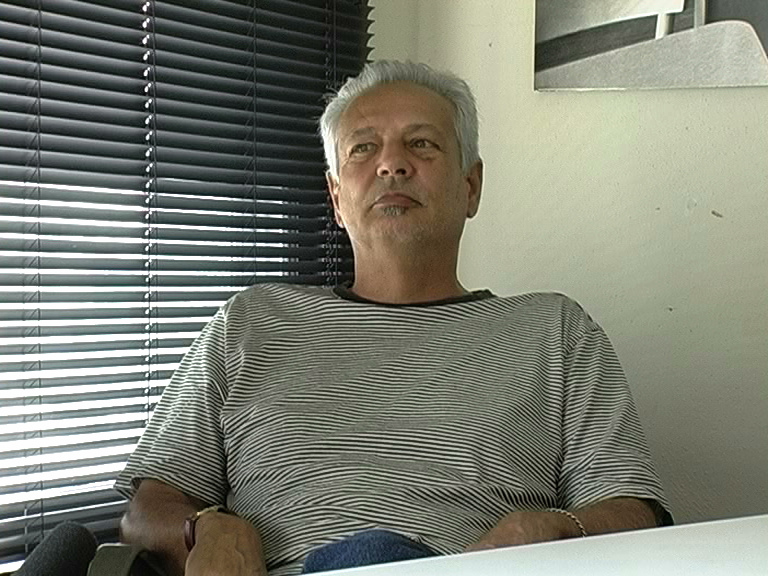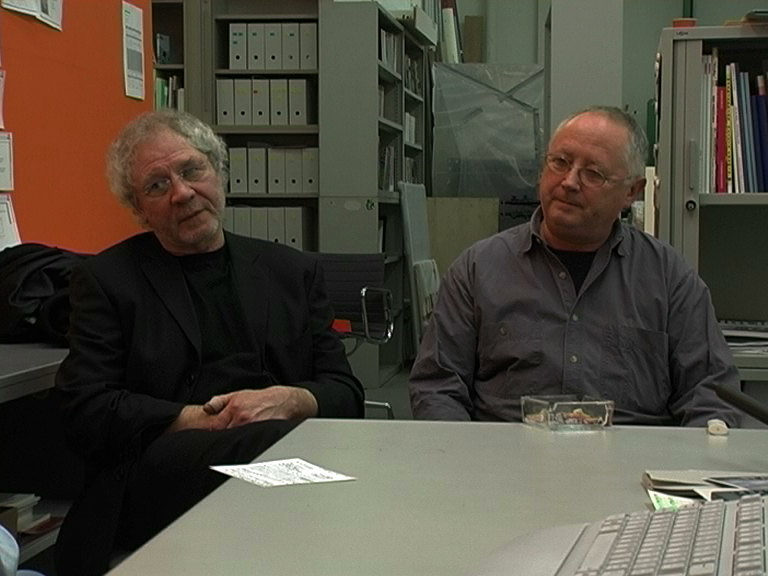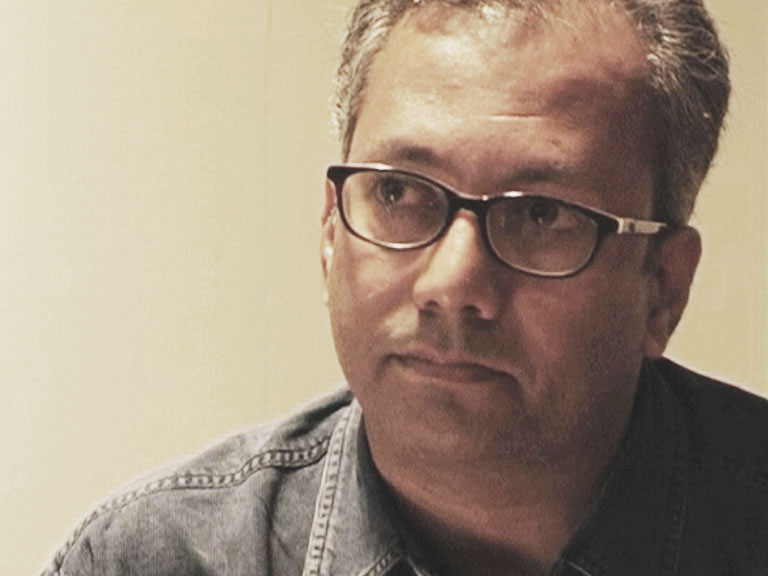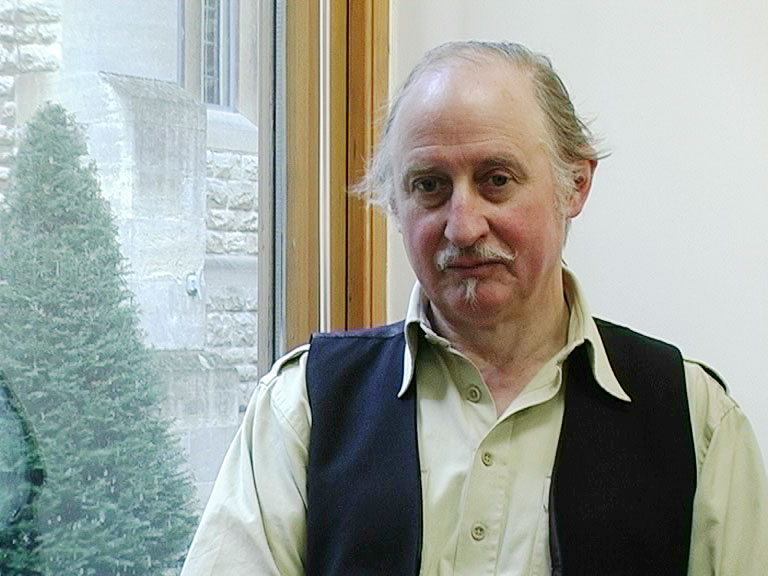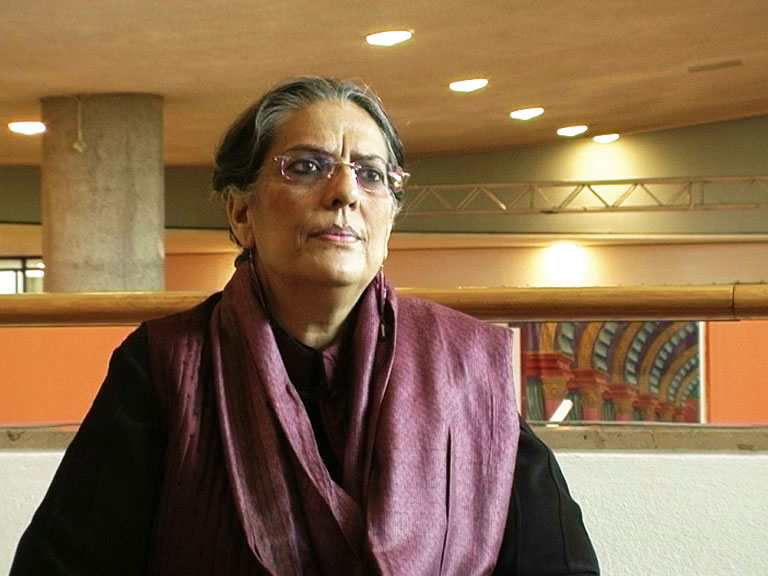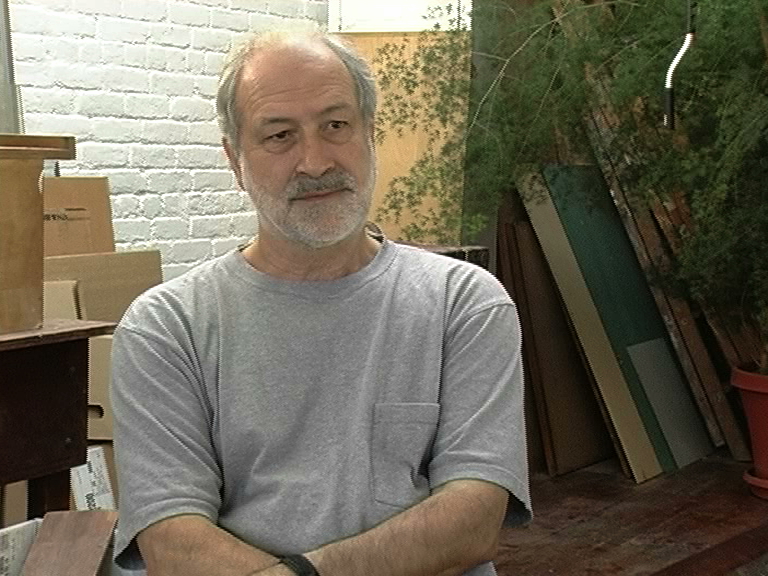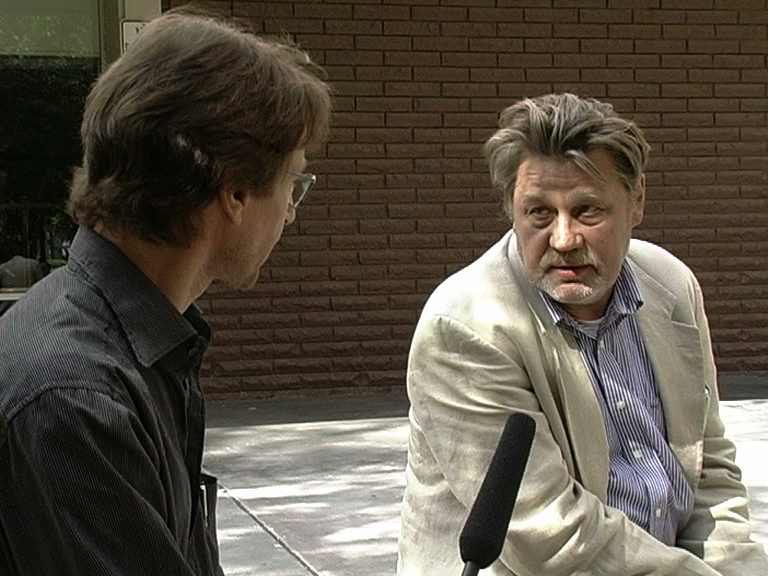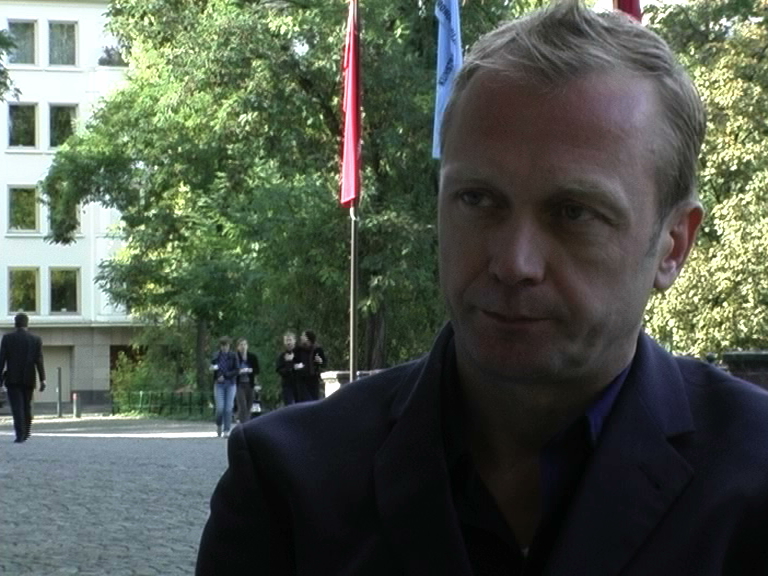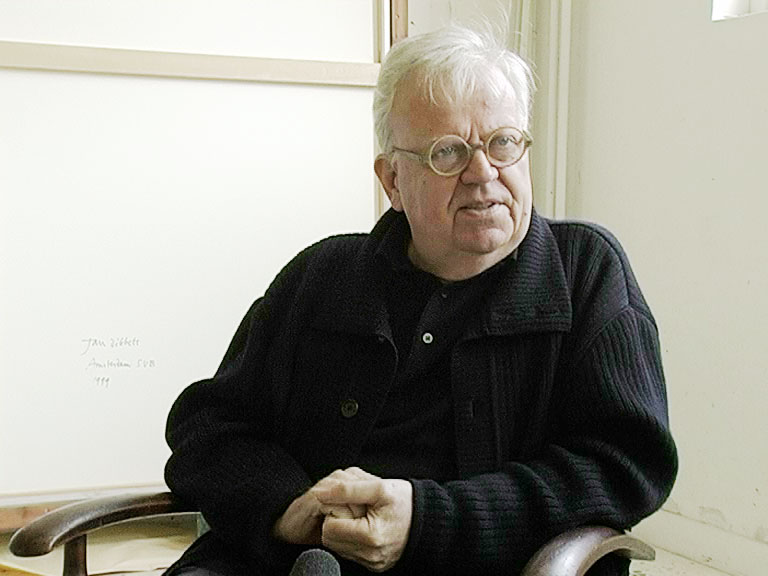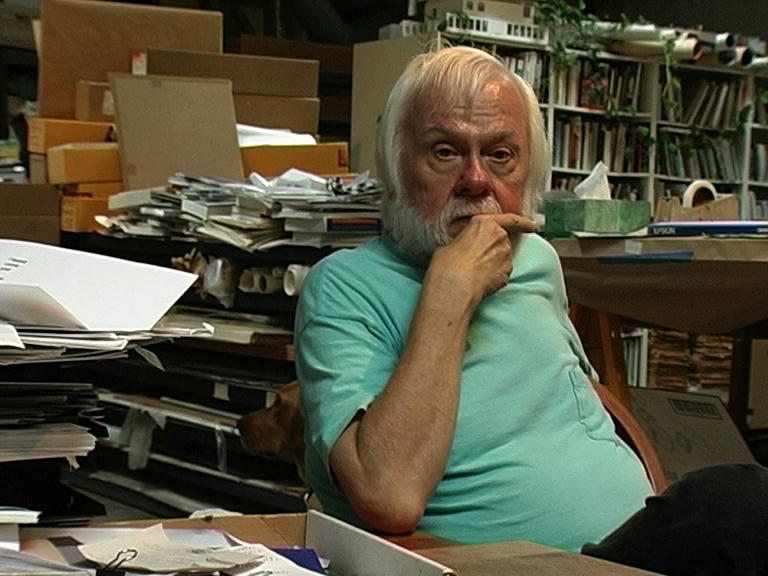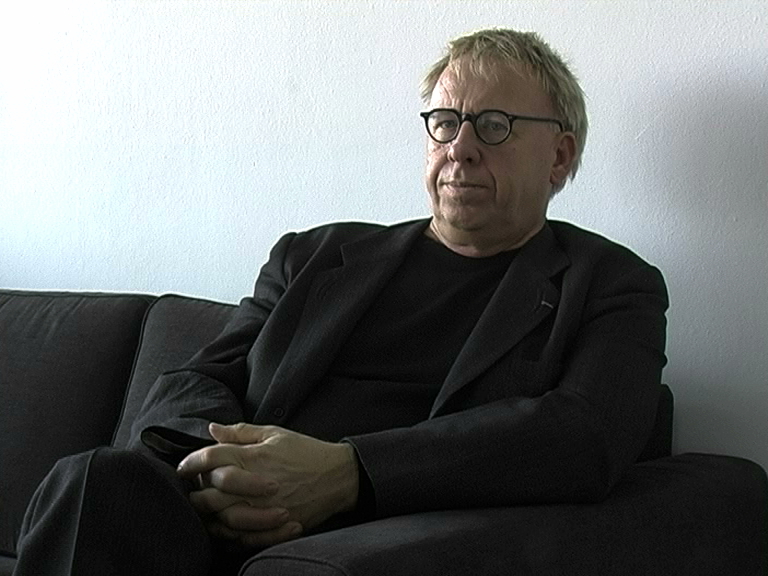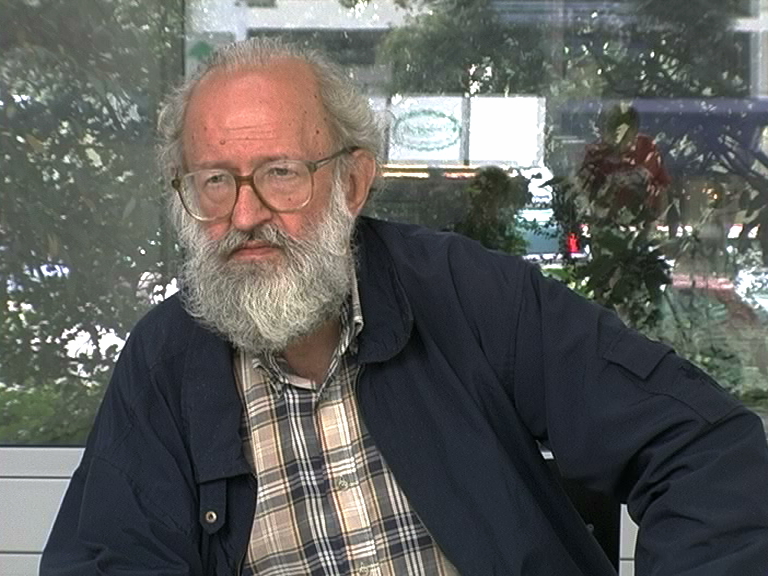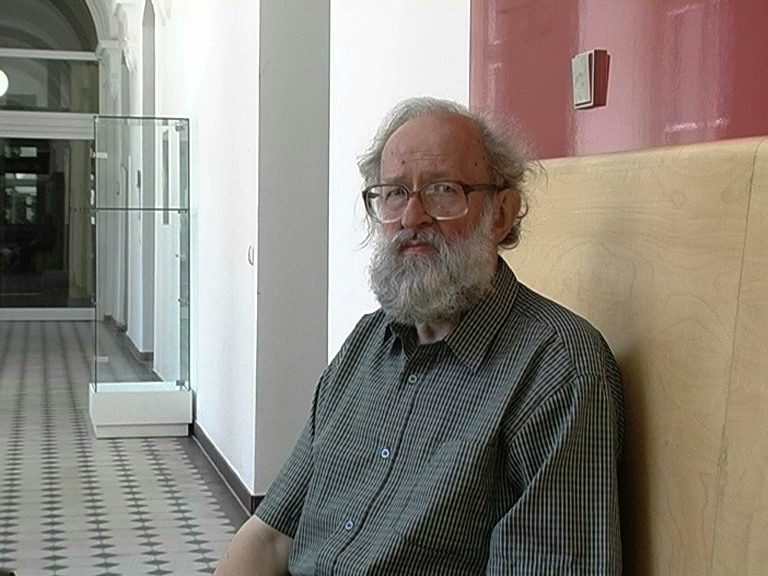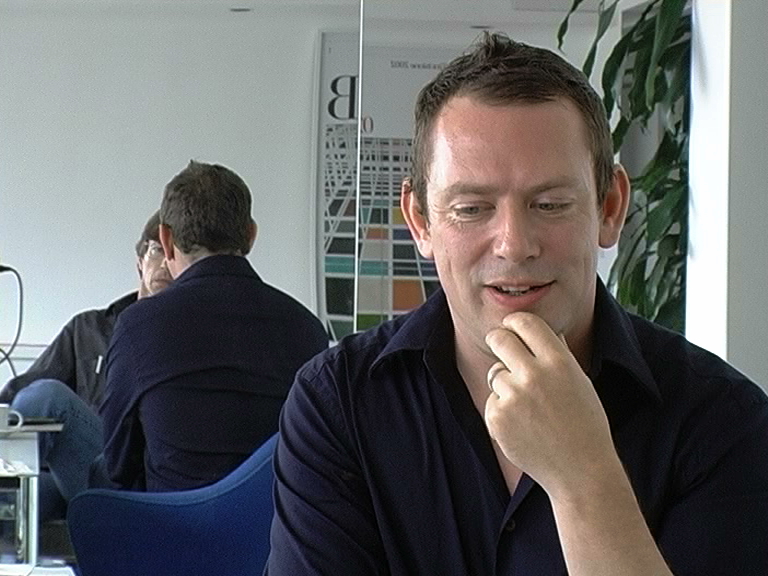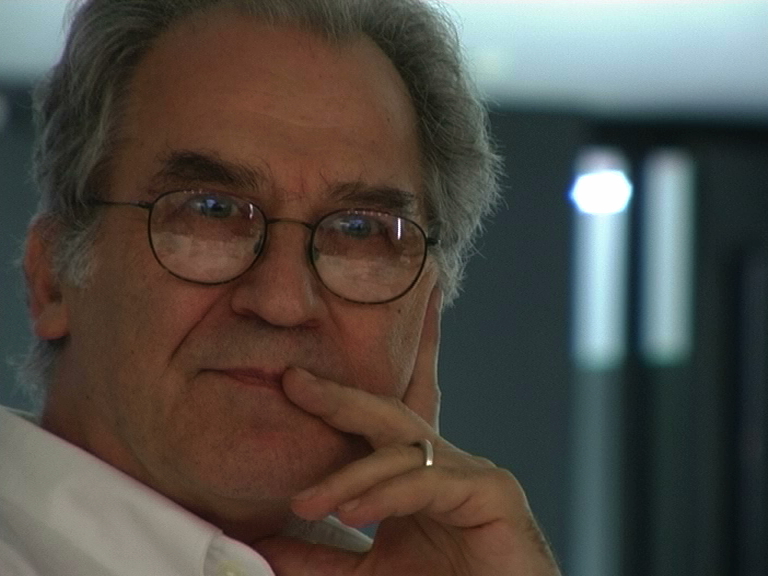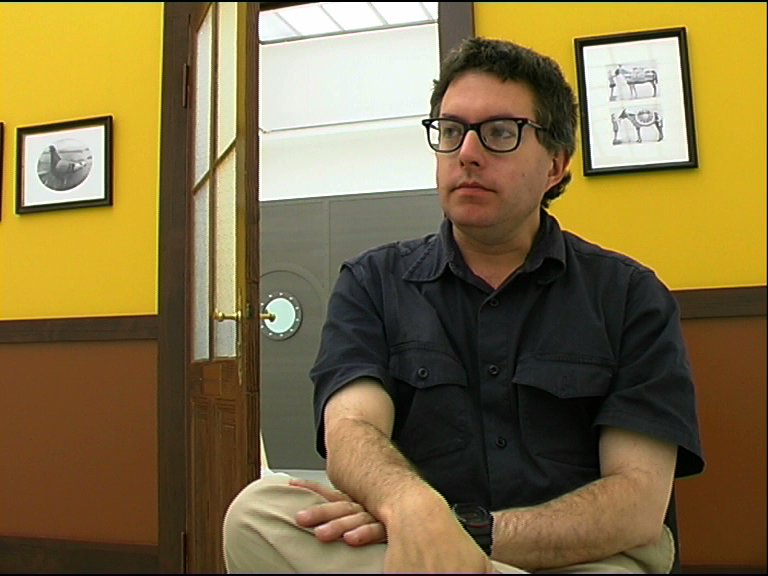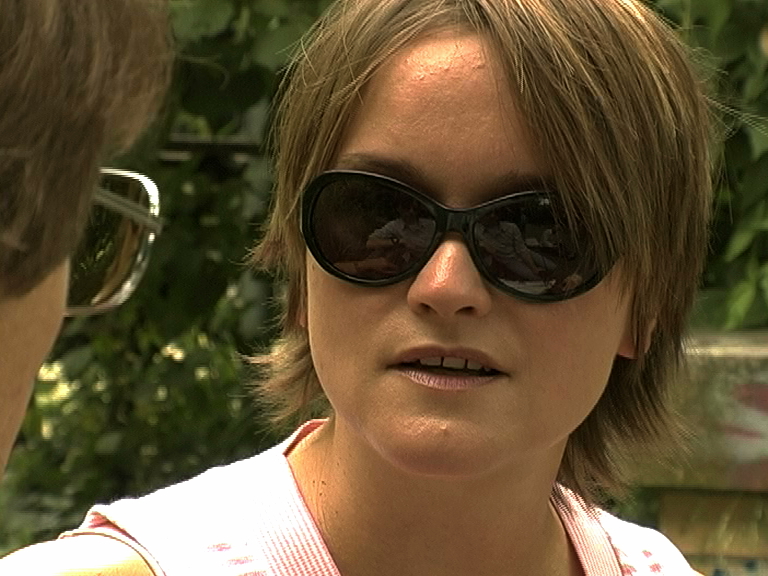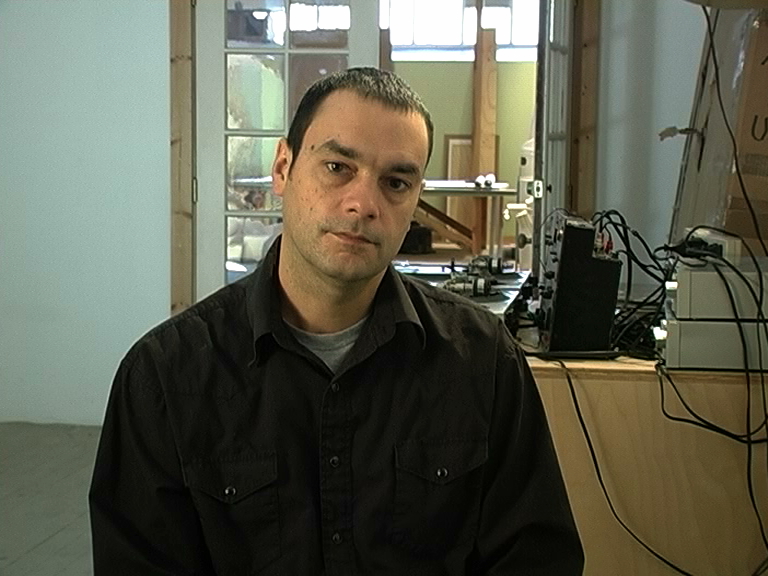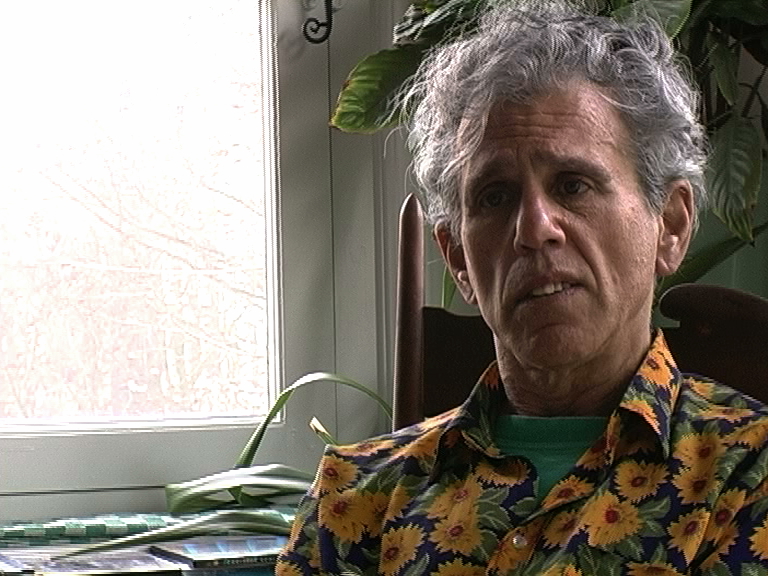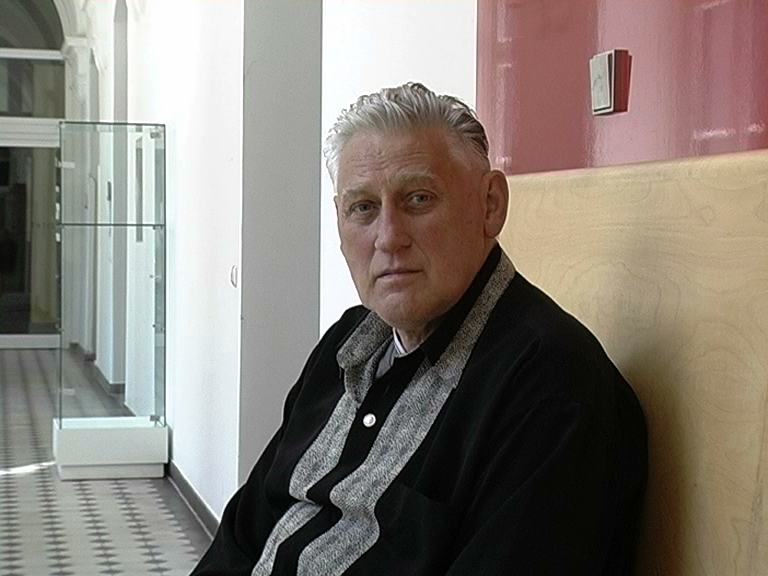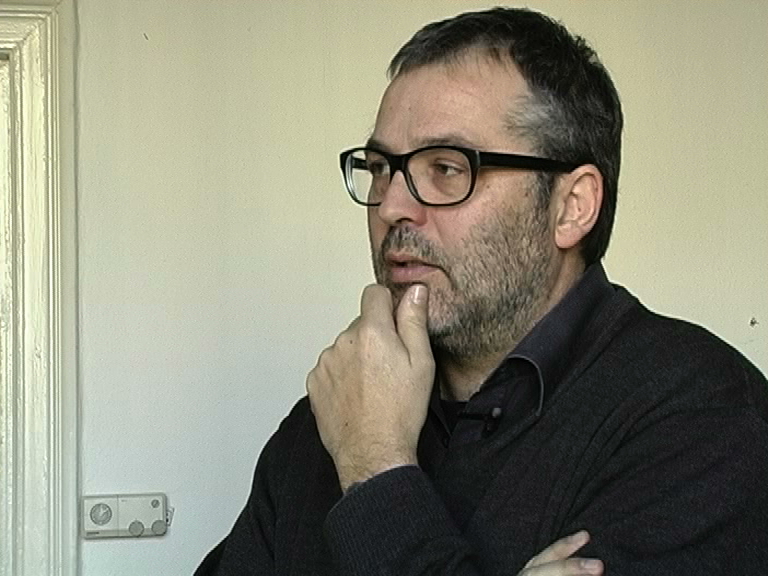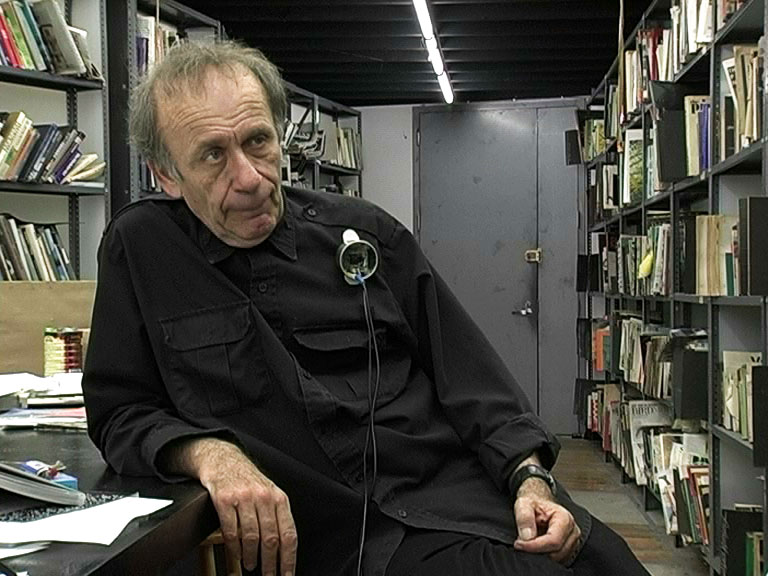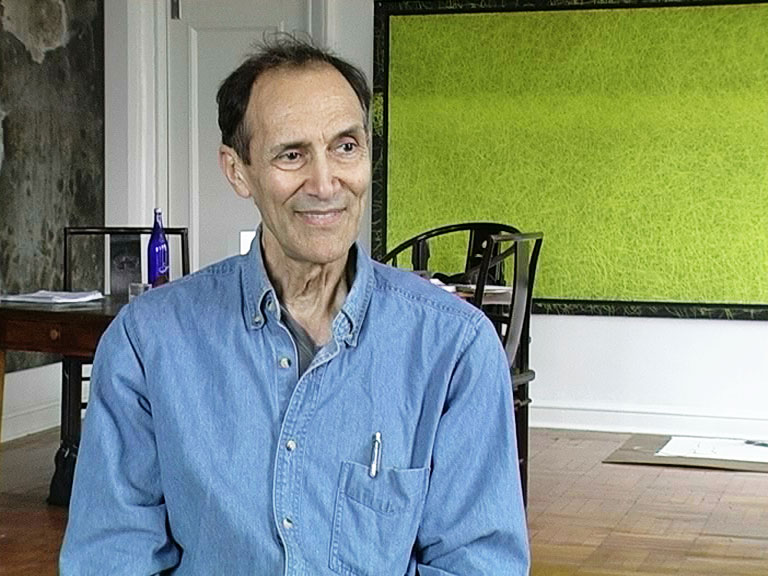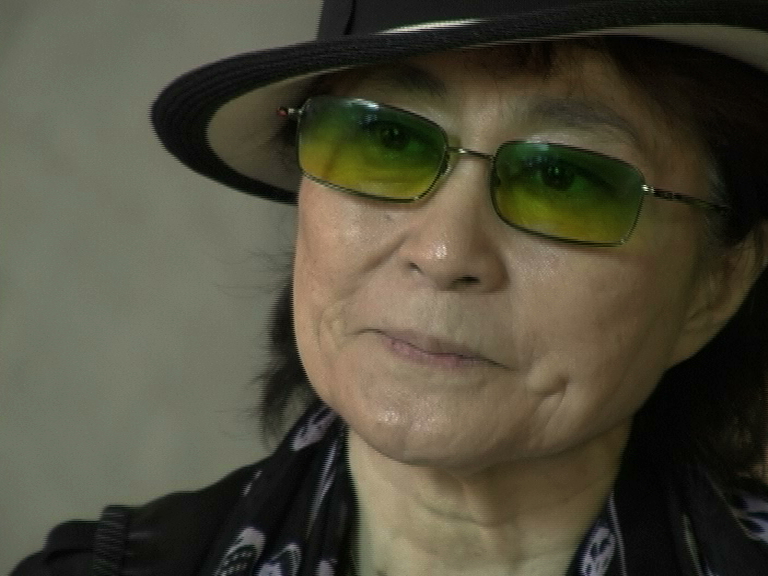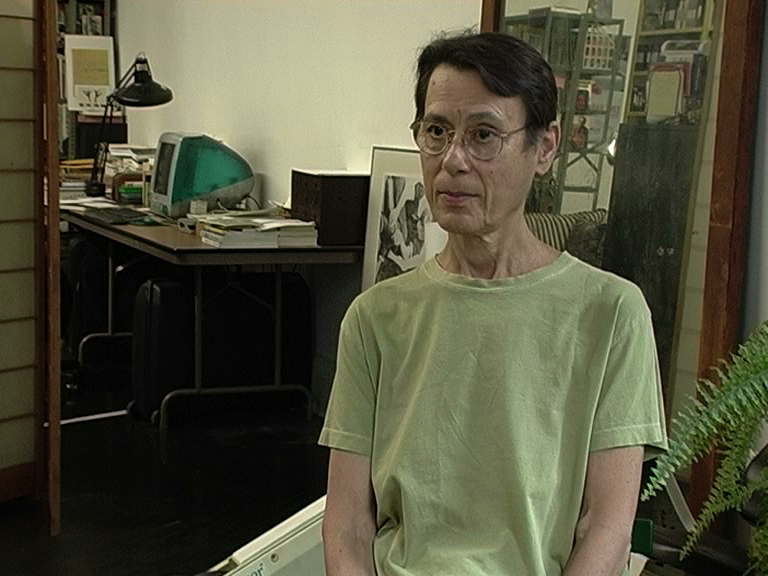SR.: So I wanted to start to ask you about the two different strategies of writing about Conceptual art. When I see, I put it right, you were using something like the critical anthology in your two books „Recording Conceptual Art“ and the “Critical Anthology“. And the other thing is where you set up the critique in relation to one thread that was the “Conceptual Art and the Politics of Publicity”.
A.A.: Two different modes of writing, yeah, and I also edited an anthology, “Recording Conceptual Art”, are you familiar with that one? Patricia Norvel and I, an interesting set of documents from early 1969, interviews with eleven artists, that a lot of them went on to be known as conceptual artists. It‘s interesting because the book that I wrote, the single author book, “Conceptual Art and the Politics of Publicity”, I published all my research material, all the resources that I used to write the book before I published it. So if you think of the „Conceptual Art Anthology“ with MIT Press and the „Recording Conceptual Art“ with University of California Press, a lot of that material were the archives that I used in order to construct the argument that I constructed in CAPP. […] In a way they are connected for me, because those were the resources. […] I did a lot of research. In fact […] CAPP was essentially my dissertation. And there was such a need for that information in the 1990s that I published all my sources before I published the book that the sources were based on. It was an awkward situation writing CAPP because if you look at the footnotes I ended up having to cite myself in the anthologies because I published so many of the articles and so many of the essays and so many of the manifestos that I used the buttress of the argument in CAPP prior to the publication of CAPP. The anthologies were very useful. The first one, „Conceptual Art. A Critical Anthology“, has done very well in terms of sales – not that that matters to me – but it seems there was clearly a need for that kind of book, because it seems to have been placed on a lot of reading lists of professors who assigned it to their students. The other book also seems to be doing well, the „Recording Conceptual Art“. But the single-authored book, what I tried to do there was more what I considered […] an ideological critique of Conceptual art. I wanted to not just write a history of Conceptual art,[…] well I wrote a history of a discourse, if you will, that came to be called Conceptual art, but I also wanted to critique it, I wanted to approach it in what I considered to be a dialectical manner of addressing it, but also looking at it from different angles to try to see what kind of meaning we can really glean from that discourse that came to be called “Conceptual art”. Of course I knew when I wrote that book that there were earlier moments where artists had claimed the term “Conceptual art”. That wasn’t something that interested me, though. What interested me was this construction of a movement, which I think was very clear […] in the way that it was discussed, a movement that came to be called Conceptual art. And I try to make an argument that the construction of that movement was one that was not by chance. It was highly organized. Seth Siegelaub […], I consider him to be a very important figure in coalescing all of these disparate elements, but so were certain artists that were involved with Seth Siegelaub. I try to make the argument, though, that thIs particular cristallization of what came to be called Conceptual art […] could not have taken place without the particular social and historical context in which it took place. There was a need in late 1960s, not to say 1968, for an art that spoke to the social movements of ’68, and it seemed that Conceptual art fit that need, if only for a moment, if only for nine months. But […] I tried to show in certain […] critical writings by Gregory Battcock, Lucy Lippard, and others that they look like Conceptual art was the art of ‘68. […] That would be a historical argument that I try to make, based on the historical research that I was doing, rather than a critical argument talking about any kind of value judgment. I was just trying to show that at that particular moment that’s how it was read. Whether or not we think today that it was an art of ’68 is another issue. But in early 1969, in a weird way, May ‘68 in New York takes place in January 1969 with the […] coalition of the art workers and other phenomena that take place in early ‘69. […] In a sense then, these two different approaches to the history of Conceptual art for me are very connected on a personal level. […] Someone else would […] probably provide a better critical analysis of the two different approaches, because they are so connected for me. Basically, the anthologies are the resources that I used to write the single-authored book. So I don’t see them separate at all, but […] perhaps another person would see them as separate. And I really think that would be a valuable critique, a valuable analysis of that phenomenon.
S.R.: So – would you say that after your writings about Conceptual art you are now ready with it?
A.A.: What do you mean? Ready? Am I done with it? Yes. (laughs) Why? Because I’ve written a lot on it now. […] One thing that i have to say that I really like is that […] there is still a lot of room for a discussion of Conceptual art separate from the one that I made. […] A lot of scholars are now seeing Fluxus and Conceptual art, and I think that’s a very productive way of looking at it – I don’t see it. […] From my research there is not […] the reading that a lot of Conceptual art is coming out of Fluxus… my research doesn’t bear that out. But if somebody else can make that argument and show that in fact there were a lot of important, real connections.[…] One of my criticisms of a lot of scholarship is that it only looks at the formal aspects: Because a particular work looks like Conceptual art then it’s Conceptual art. George Brecht does something that looks like Conceptual art therefore that’s a Conceptual art piece. […] I think that’s really a misunderstanding.
S.R.: I agree that it’s a misunderstanding because, as you said before, for me Conceptual art is much more something like a discourse, and the discourse is working with some different modes of display.
A.A.: Yes, exactly. On the other hand […] the more arguments, the better. I really believe that. I want people to develop views that are not mine. And of course they will, because mine is actually a very particular view of Conceptualism. I mean some people say I dealt with the Fab Four, I dealt with the one group of conceptual artists that became to be known as the conceptual artists because they […] kind of monopolized the term “Conceptual art”. I actually tried to show how they did monopolize that term and how it was not by accident that they came to be the representatives of Conceptual art. And the people I mean are the people around Siegelaub: Kosuth, Weiner, Douglas Huebler and Robert Barry in particular. […] and how other discourses of Conceptualism such as that proposed by Sol Lewitt who published a very important manifesto in 1967, get kind of pushed aside. […] Joseph Kosuth’s essays are crucial here because he’s the one that actually already in 1969 says, there are real conceptual artists and then there are post-minimal artists and then there are those other ones.
S.R.: This was also a strategy of exclusion. In his very famous essay “Art After Philosophy” he said that these artists are not involved in Conceptual art, they are narrative or whatever.
A.A.: […] I think that a lot of people were extremely upset by that kind of argument. That essay is highly polemical, the „Art After Philosophy“, it’s a three-part essay. And I think he has never really recovered from that in terms of his friendships because a lot of people were very upset. On the other hand, he was 23 years old at the time, and if you read that essay, for a 23 year-old guy writing it, as much as I don’t get along with Joseph Kosuth which I don’t, […] I mean there is a history there, you have to at least say, if I had a student at 23, that was writing like that, it might be very polemical and highly ideologically problematic, but you still have to say, well, good, there is a potential here. That he did not follow up on that potential is another issue […] that we don’t want to get into here.
A.A.: You know the term “Conceptual art” is of course a very complicated one because not many artists refer to themselves as “conceptual artists”. If you talk to Lawrence Weiner […], Dan Graham […] – it’s not a term they particularly associate themselves with. That’s why I consider it a discourse. They came to be associated with that term. How did that happen? It happened […] through talking, through a discourse that was in the press, […] in critical reviews, picked up by writers, Jack Burnham, Lucy Lippard at first, Ursula Meyer to a certain extent. And then […] museums started to exhibit it as a movement like that. Movements were very important for a museum to consolidate something. […] Think of something like Conceptual art. Look at the “Information” show. There were like 200 artists exhibiting there. So you have to put them under some kind of rubric, and the rubric came to be Conceptual art. […] It made more sense if you could say: These are conceptual artists. […] The term is a very […] difficult term to use because if you […] look at the term from today’s perspective, anything that a critic cannot describe, any kind of gesture that a critic cannot describe, they just call it “conceptual”. In other words: If they don’t know how to […] describe it – well, that’s conceptual. […] It takes on this lazy sense. Instead of figuring out what it is, they just say it‘s Conceptual art.
S.R.: There is another rhetoric figure: If artists use language, if they use images with language or with letters for example, they also call it Conceptual art, even if there is no kind of approach of critique, there’s no kind of ideological critique, epistemological critique or whatever.
A.A.: Absolutely. Just the other day somebody was trying me to tell that Kiefer was a conceptual artist because he uses language. […] I almost think it’s not a usable term. In fact today, 35 years later, if you will, it’s absurd to refer to works. It shows a certain laziness in the person that’s writing, the critic in that case, to talk about these works as conceptual. That’s one of the things I tried to do with my book, try to be historical: […] These artists came to see themselves, […] the dealer advanced them as conceptual artists. If we’re going to talk about this term which today means anything that you cannot describe… You have to have some kind of relation to what was initially termed “Conceptualism”. I don’t know of any other moment in history, perhaps you can think of Cubism, how in the 1910s and 1920s anything that was kind of fragmented and abstracted but not completely abstraction, a kind of figurative […] abstracted work, came to be seen as Cubism. […] The term became very watered-down. I think a similar situation has happened with Conceptualism.
S.R.: My suggestion in this […] historical and discourse situation is that I want to differentiate between two terms. One term is conception. That is something like a reflection, that the artist is reflecting history of art, is reflecting different positions of painting, sculpture, whatever, and is using this reflection for his own work. […] This could be something like a conception. In German you can put it easier in the writing. The second is the relation to “conceptual” and conceptual for me can mean something like a reference to the historical Conceptual art in New York, Britain, centre of Europe, like Daniel Buren, art & language and the group you wrote about in New York. Then we can divide this “conceptual” which is highly reflexive on ideology, epistemological critique, art critique and things like that; we can differentiate again through places, for example New York or Europe and different places in Europe […] or also like Luis Camnitzer in South America […] or different positions like Oiticica or others in Japan or Africa. And then we can differentiate how they relate to comparable sources or places of communication in art history. […] In my questions I’m using this problematic term of “influence” but then you call the whole discourse like the anxiety of influence and all these things. […] I’m using the term influence but I want to use “influence” not in the traditional way like inspiration, intuition […]. I use […] influence more like a […] relation of communication.
A.A.: […] I think that if one tries to link fabulously interesting work like Oiticica, some of the work you were talking about that took place pretty much around the world between the 60s and the late 80s and you try to see it as conceptual, I think it’s a very interesting phenomenon, whereby there is another kind of colonialization of art movements that had nothing to do with Conceptual art. Oiticica… there’s a whole history of what he was working with: the Tropicália movement, the Anthropofágia movement… (?) There was such a rich history that in order to see it through the lens of Conceptual art […] I think it’s such a peculiar phenomemon to try to do that because it sees it through the lens of New York, instead of seeing it as an art movement that in fact, if you look at it historically, – I’m talking in this case of the movement in Rio – they tried to separate themselves from New York. They had this whole history from Europe to Brazil and trying […] to cut a different picture than the abstract expressionists. They were trying to mediate and in fact they were. They had their own genealogy. To now see it through the lens of Conceptual art… I just don’t see… it’s strange for me when even people from […] Latin America want this to happen, because it just seems like a desire of being colonized. Why not talk about the fabulous history and genealogy that lead to this work that was separate from minimal, conceptual, New York-based art movements. I don’t see what the gain is to see, since we’re talking about Oiticica, to see Oiticica as a conceptual artist. […] You can then say I included him in my Critical Art Anthology. And I think that […] what I was doing was trying to show that actually Conceptual art is a discourse, […] this was happening around the world, and part of what he […] and Lygia Clark and others were actually doing had a kind of, in a discursive way, a parallel. We are talking about parallels but I didn’t go as far as to call them conceptual artists. […], because I think the actual term Conceptual art becomes so specific that […] it starts to refer to almost very, very few people. That doesn’t mean that there is anything primary, anything particularly significant about these individuals other than the fact that they themselves decided that this was their term and they were going to wear that term as their own. Typical figures emerge here again, Kosuth, even art & language. The first journal of art & language, the first issue was called the “Journal of Conceptual Art”, or subtitled. But they dropped that very quickly. They knew how loaded that was. Buren didn’t want to have anything to do with that. Hans Haacke… they don’t bother it. Even Sol Lewitt once told me: At a certain moment I just gave […] it to Kosuth, he wants it so badly, he can have it. […] We don’t care, just keep it. [laughs]
S.R.: That could be a good end of this talk. But […] I’m really strongly interested in… first: How did we reach the point that we can talk about movements in the history of art reflected like this? For this instance, isn’t Conceptual art very important for our discourse in an art historical way? And the other thing is the question of exclusion, inclusion and colonization of different points of production, of terms and movements and things […] is in both ways interesting. Like you said, now we try to involve Oiticica in the Conceptual art movement or thinking. The other way is that people like Camnitzer have been really early in the 60s in New York, and they were not involved in the Conceptual art movement, but maybe they should be involved in the whole context.
A.A.: So there two questions, right?! One is: Has Conceptual art influenced the way we even talk about art history? I think that one thing about a lot of the artists that we were talking about is that… […] It’s interesting if you read Howard Singerman’s book on the MFA-program. You realize artists around the 1960s begin to – not that Singerman talks about this in particular – it’s in the 1960s that artists begin to write in a very articulate way. […] In an interesting way because criticism was so bad at that moment according to the artists, they decided to take it up on their own. They decided to do their own art criticism. Judd does it. This a minimalist art phenomenon where they start to write their own criticism about their own work and about the work of the artists they care about. […] That produces this artist who is very well educated in writing, shall we say. […] If you look at all the anthologies of collected writings of artists that have been coming out in the last 15 years it’s that generation of the 60s and 70s. It has always struck me as peculiar that younger artists today, even artists that claim to be conceptual artists, don’t write. […] It looks like we’ve entered a completely new moment. I try to show the beginnings of that moment even with Conceptual art in the sense of the image becoming even more important than […] what the substance was. If you advance something and talk about it in this particular way that’s already going to construct something rather than any kind of work supporting this. But if you look at a lot of younger artists today… I’m trying to do a series of […] collected writings of younger artists and there are very few. There’s Gregg Bordowitz… Very few artists of this generation have really written to the extent that Smithson wrote or Judd wrote or Dan Graham wrote… Mary Kelly, Martha Rosler […] Daniel Buren. […] I think Buren’s writings are so important. For me, I have to say, […] that was my starting point in all this. I remember reading some of those essays and thinking […] as someone who was interested in art history – how can I continue talking about art history after reading these critiques. They were just so phenomenal. And I wasn’t getting in art history – I mean I did – people like Tom Crow, Tim Clark were also very important because they were also critiquing all of the givens that we had. […] I’m talking about the mid 80s, when I began in art history, there was already a good critique of art history from art history itself. But it was interesting it was people like Buren, like Haacke that really problematized the whole field for me… Mary Kelly, hugely important Martha Rosler – that in a way I think the artist was so far ahead of the historians at that moment of contemporary art, anyway, let’s just call them the critics, with the exception of a few I’ve just mentioned – that they had a profound impact […] I’m a product of that I would say. //S.R.: Me too// […] Then when we look at a lot of these young artists, […] their work looks like Conceptual art but they’ve probably never read a Buren essay and they certainly don’t have the critique that was developed there. […] It’s the look rather than the substance. Of course then one could say, look what’s happened to Daniel Buren. […] You could almost say that he’s contradicting some of the initial premises, but that’s another issue altogether.
S.R.: Okay, thank you very much for today.






